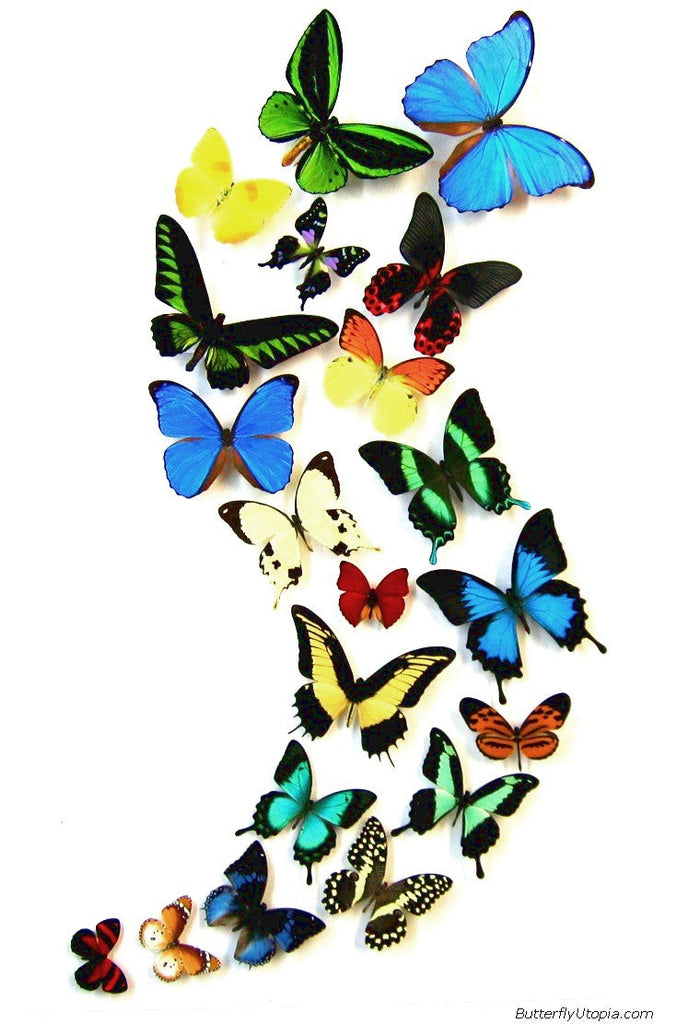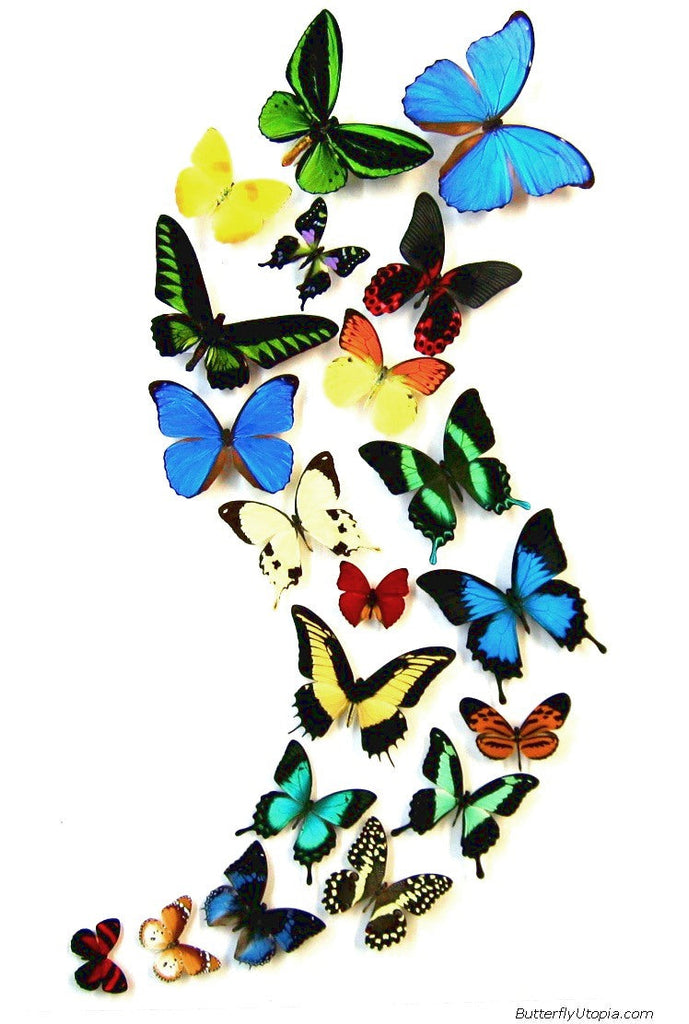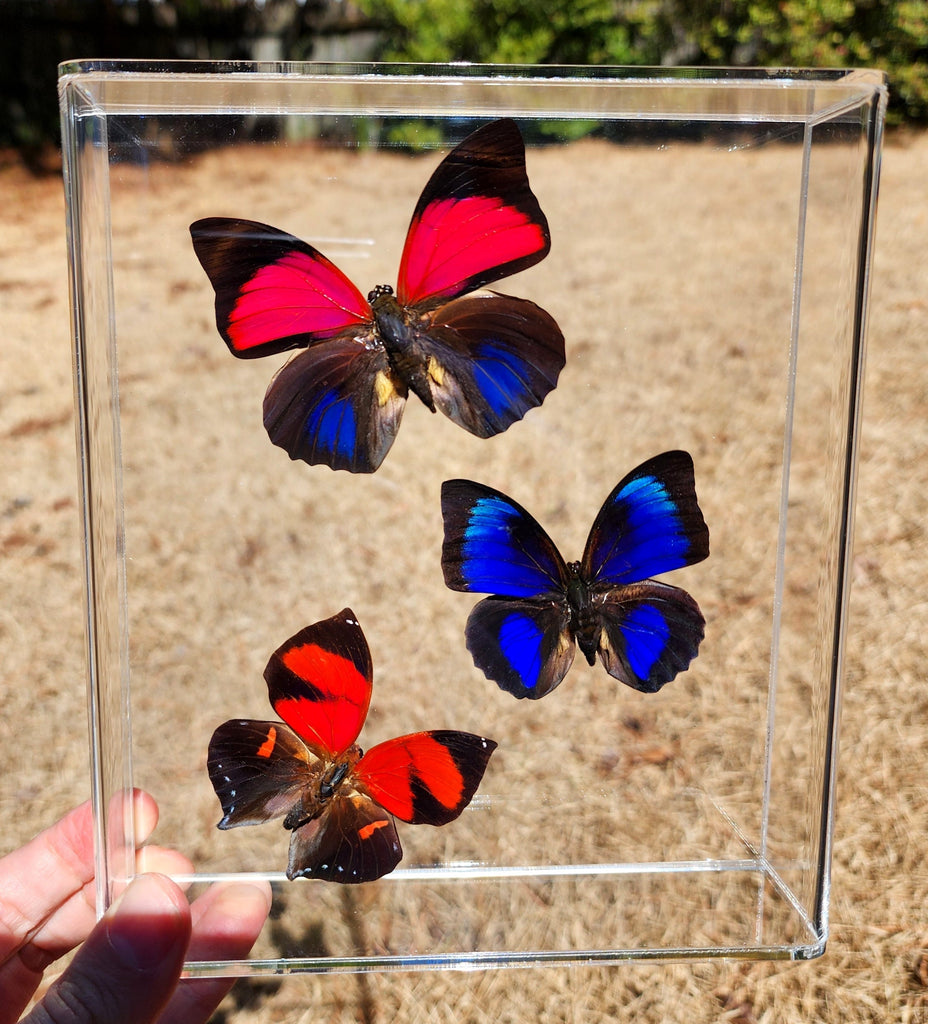News
Butterflies and Grief: Art as Healing through Nature Symbolism
Posted by Paul Caparatta on
Butterflies and Grief: Art as Healing through Nature Symbolism Grief often defies language. When words fail, images and symbols can bridge the space between sorrow and meaning. Among the many emblems of hope and transformation, few are as universally resonant as the butterfly. Across centuries and cultures, this fragile creature—born from stillness into flight—has become a living metaphor for the cycle of loss, renewal, and the enduring presence of life. In art, the butterfly offers not just beauty, but solace: a way to express, transform, and ultimately heal from grief. The Butterfly as a Symbol of the Soul From ancient...
The Beauty of Transformation: Celebrities and Their Butterfly Tattoos
Posted by Paul Caparatta on
The Beauty of Transformation: Celebrities and Their Butterfly Tattoos In the ever-evolving world of celebrity tattoos, few designs have remained as universally beloved—and deeply symbolic—as the butterfly. A timeless motif rooted in metamorphosis and freedom, butterfly tattoos have fluttered across the skin of countless public figures, each one with its own personal narrative. From pop stars and actors to models and influencers, butterfly ink has emerged as both a fashion statement and a profound symbol of personal growth, femininity, and rebirth. But why are so many celebrities drawn to this delicate yet powerful image? Symbolism and Cultural Meaning Historically, the...
The Symbolic Beauty of Butterflies in Paintings
Posted by Paul Caparatta on
The Symbolic Beauty of Butterflies in Paintings Butterflies have long captivated the human imagination, not just for their delicate beauty but also for the rich symbolism they carry. In the world of painting, these ethereal creatures have been used by artists across time and cultures to evoke themes of transformation, the soul, and the fleeting nature of life. Symbolism of Butterflies in Art Throughout art history, butterflies have held layered meanings: Transformation and Metamorphosis: Due to their life cycle—from caterpillar to chrysalis to winged insect—butterflies symbolize personal growth, change, and rebirth. Artists often use them to depict psychological or spiritual...
Butterflies in Religion: Symbols of Transformation and the Soul
Posted by Paul Caparatta on
Butterflies in Religion: Symbols of Transformation and the Soul Butterflies, with their vibrant wings and metamorphic life cycle, have long captivated human imagination. Across many cultures and religions, these delicate creatures serve as powerful symbols of transformation, resurrection, and the human soul. Their journey from caterpillar to chrysalis to butterfly has inspired rich spiritual meanings in diverse religious traditions. Christianity: Resurrection and Eternal Life In Christian symbolism, the butterfly is often seen as a metaphor for the resurrection of Christ. Just as a butterfly emerges from its cocoon transformed, Christians view the resurrection as a triumph over death and a...
Wings of Meaning: Butterflies in Pop Music
Posted by Paul Caparatta on
Wings of Meaning: Butterflies in Popular Music Butterflies, with their delicate beauty and metamorphic life cycle, have long captured the imagination of artists, writers, and musicians. In popular music, the butterfly serves as a rich symbol—often evoking themes of transformation, fleeting beauty, freedom, vulnerability, and emotional awakening. From soulful ballads to psychedelic rock and contemporary pop hits, butterflies have fluttered through genres and decades, leaving their mark in lyrics, titles, and imagery. Symbol of Transformation and Growth One of the most common themes associated with butterflies in music is personal transformation. Just as a caterpillar undergoes a profound metamorphosis, artists...




